#best alternative to shopify
Text
Shopify Alternatives: Exploring Your Options
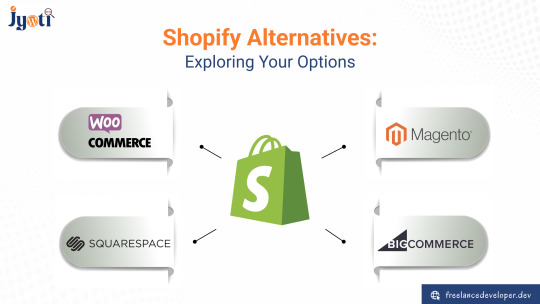
Looking for Shopify alternatives? Explore your options and find the perfect e-commerce platform for your business needs. Discover the best alternatives in this blog.
#shopify alternatives#free shopify alternatives#best shopify alternative#ecommerce platforms like shopify#best alternative to shopify#best free shopify alternatives#build ecommerce website#create ecommerce store
1 note
·
View note
Text
WordPress is very famous Content Management System (CMS) with 43% of total website of the Internet functioning on this platform. But you want to be different and feel different and don't want to go to the same route.
So, here are the best WordPress alternatives for you in 2023.
Happy reading!
#wordpress#wordpress alternatives#shopify#online store#small business#best#wordpress themes#wordpress developer#joomla#drupal#drupal cms#hubspot
0 notes
Text
Spocket: The Best Dropshipping Supplier in 2023
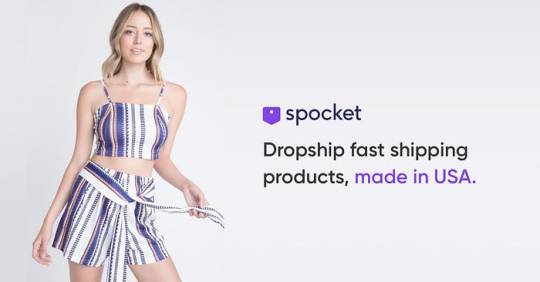
In the fast-paced world of e-commerce, dropshipping has emerged as a popular business model, allowing entrepreneurs to start their online retailing journey without the hassle of managing inventory. As dropshipping gains momentum, having a reliable supplier is crucial for the success of any Shopify or online store. In 2023, one name stands out from the crowd — Spocket, the ultimate dropshipping partner. Let’s explore why Spocket is the leading dropshipping supplier in this competitive landscape.
1. Extensive Network of Suppliers
One of the key factors that sets Spocket apart is its vast network of wholesalers, distributors, and manufacturers. Their carefully curated selection of high-quality products to sell online caters to a wide range of niches and industries. Whether you’re into fashion, electronics, home decor, or any other niche, Spocket has got you covered.
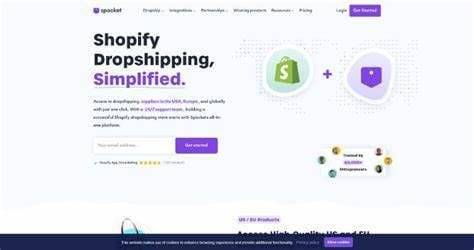
Spocket seamlessly integrates with Shopify, making it an excellent choice for anyone looking to start their dropshipping journey using the Shopify platform. The ease of use and user-friendly interface enable entrepreneurs to set up their online store and start selling products in no time.
3. Risk-Free Start with a Free Trial
Understanding the importance of trying before investing, Spocket offers a risk-free start with a free trial option. By signing up for a trial, you can test run the platform, explore the inventory space, and assess the potential for dropshipping success without any initial commitment.
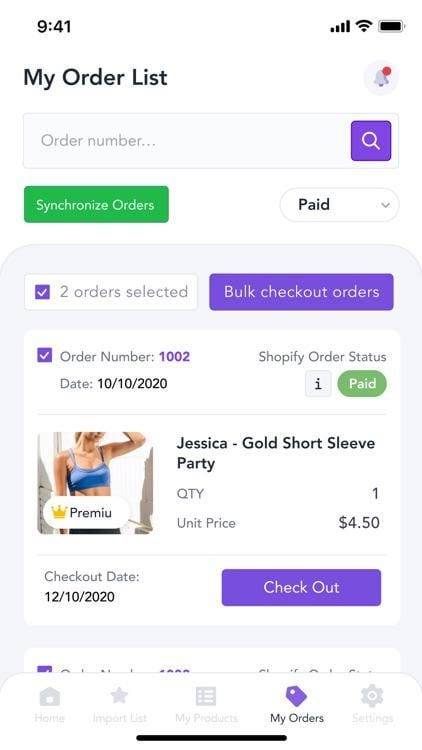
Global fulfillment is a crucial aspect of running a successful dropshipping business. Spocket understands this need and has established international shipping hubs, ensuring fast and reliable shipping to customers worldwide. This global presence reduces shipping times and enhances customer satisfaction, giving your dropshipping business a competitive edge.
5. Marketing Support and Branding Opportunities
To thrive in the e-commerce landscape, effective marketing and branding are essential. Spocket provides marketing support and resources to help you promote your online store effectively. From advertising tips to branding guidelines, Spocket assists you in establishing a strong presence in the market and attracting more buyers.
6. High-Quality Products for Happy Customers
As a dropshipping supplier, Spocket prioritizes the quality of products it offers. Selling high-quality merchandise not only leads to satisfied customers but also reduces the likelihood of returns and refunds, ultimately contributing to a more profitable and lucrative dropshipping venture.
Conclusion
In 2023, Spocket stands tall as the best dropshipping supplier for e-commerce entrepreneurs. With an extensive network of suppliers, seamless integration with Shopify, risk-free trial options, and worldwide warehousing, Spocket provides the essential elements to succeed in the dropshipping business. Furthermore, their commitment to marketing support and focus on offering high-quality products ensure that both you and your customers will be happy with the partnership. If you’re ready to embark on a profitable dropshipping journey, Spocket is undoubtedly the fulfillment partner and shipping vendor you need to collaborate with to achieve dropshipping success.
Try it for free
0 notes
Text
Best Shopify Alternatives for Your Online Store
Shopify is software that helps you make your e-commerce website. With the help of this platform, you can manage, organize, and control various areas of your website like products, shipping, sell, order, and customer management through multiple channels.
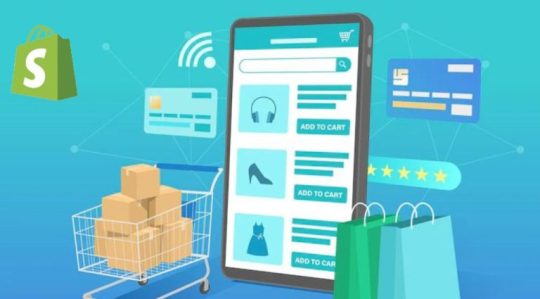
Shopify is a cloud-based hosted solution, also called SaaS software as a service so you can use this platform without worrying about software maintenance.
Shopify is an excellent platform for e-commerce. Its robust features empower thousands and thousands of businesses in more than 175 countries.
However, it is not always true that if something is popular that will only be best for you. You probably know this fact and that is why you are here to search for alternatives to Shopify. Shopify does offer Shopify Lite as an option if you want to include a buy button on your existing website or blog but its premium service may be a bit expensive if you are just starting. This could be a reason that you are searching for alternatives.
We will introduce you to some alternatives to Shopify, whether you are looking for your existing Shopify store, or starting a fresh web shop, this article is for you.
Things You Should Consider on Your Next E-commerce Platform
Before jumping to alternatives, natives, let’s see the things and features you should consider for your next e-commerce platform. Make sure your next platform solves those problems without creating new ones. While every e-commerce platform has different features, here are some smart features that your next e-commerce platform should have to make your tasks easy.
Multiple payment options
Every customer prefers different options for payments, make sure the platform you choose does support multiple payment options. Even if you are not selling to international countries currently, do not get bothered to add this feature later. Consider platforms that offer payment gateways that can transact and settle in multiple currencies.
Customization opportunities
The style to operate your business may be different than other businesses. Plus, your business is unique and you want your customers to know it. This is where customization comes into the role. You need customization for your web design that is different from others. Choose a platform that can customize the themes and designs. That will help you to achieve your identity.
A catalog that can grow as you grow
With the business expansion in the future, you will probably need to scale everything including a large catalog, but what if the platform you are choosing caps at a certain catalog?
As a business owner, you need to predict everything that your business will need in the future. And research the different platforms that fill that demand.
Great Shopify Alternatives
Once you have determined what you want from your next e-commerce platform, it will become easy for you to filter various platforms available in the market.
The list is too large that we cannot name every single platform but we have curated some of the best e-commerce platforms that are popular for their extensive features.
BigCommerce
BigCommerce is an excellent e-commerce platform that is flexible for all kinds of e-commerce businesses of all sizes to create and scale their online stores.

The best part of BigCommerce is that it is open-source means there is a huge scope of customization and a user does not have to worry about software maintenance as is SaaS.
Advantages
Powerful features are available for every plan
It supports more than 55 payment gateways option with zero additional transaction fees.
Does not require coding knowledge it’s drag and drop, page builder, and visual editor features are easy to use.
Powerful SEO capabilities, such as fully customizable URLs.
24/7 support is available and resolves issues quickly.
A large ecosystem of Agency and Technology Partners.
Cons
While BigCommerce has a wide range of paid themes, there are only a few free themes, compared to Shopify which offers nine themes.
Compared to Shopify, there’s a slight difficulty in learning because you get so many more out-of-the-box features.
WooCommerce
Woocommerce is a plugin of WordPress which was released in 2011, it is open-source it was created to turn WordPresss blogging website into an e-commerce website.

The plugin is a good alternative to Shopify if you are familiar with WordPress.
Advantages
It is free to use the plugin with any WordPress website.
It’s easy to incorporate with any existing WordPress site.
You can customize the codes as it is open-source.
You can use hundreds of free and paid extensions
Disadvantages
Even though the plugin is free but it takes charges for a few things such as costs of domain hosting, an SSL certificate, finding an email provider, and other features.
You may need a professional developer for your store if you don’t know HTML or CSS.
Adding core features to WooCommerce requires more plugins that lead to more complexity and lower site performance.
Magento
Magento is a popular e-commerce platform that was introduced first in 200, later it was acquired by adobe in 2018. Magento is created with open-source technology and it is suitable for all sizes of businesses either large or small.
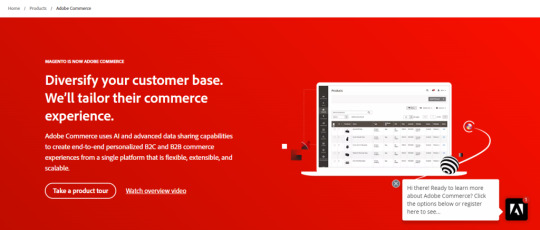
If you’re a big fan of Adobe’s other products and have extensive developer skills, you might prefer Magento over Shopify.
Advantages
You can customize everything from the backend.
Magento has a large network of over 260,000 designers worldwide adding more functionality to the platform.
Enterprise businesses on Magento Commerce have the option of a cloud-hosted solution as part of the package hosted on AWS or a self-hosted solution.
You get access to a large partner ecosystem for third-party apps and extensions.
Disadvantages
Magento Open Source is strictly on-premise, so you either need to host it yourself or go to a third-party web hosting provider.
You are responsible for installing updates when Magento releases it.
You will always need a team of IT professionals for your website maintenance no matter which version you choose or how you host your website.
Magento has a large setup, which leads to high costs to complete the builds.
PinnacleCart
It was first started in 2003, PinnacleCart is a great alternative for Shopify if you want more control over your storefront and more SEO features.
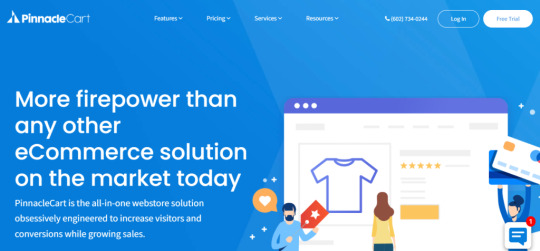
It is specially designed for small-sized businesses with a strong focus on marketing.
Advantages
You have the option either to choose to host on pinnacle Cart or to manage it on your own.
SEO-friendly features, such as schema.org tags and custom URLs.
Countless products and categories on every plan.
Disadvantages
You will need to manage upgrades and updates on your won.
There’s a very limited partner network, as it only integrates with 64 apps.
A very limited number of themes available in PinnacleCart
While Shopify works perfectly for some and there may be some people who are still not satisfied with the platform, which is perfectly fine. The above alternatives may be the best alternatives for Shopify to scale your website.
0 notes
Video
youtube
Why Dropshipping from Aliexpress is not reliable and profitable businessCheckout more tutorial videos and learn about dropshipping and e-commerce, go to; https://ecomhardy.com/ Dropshipping from Aliexpress, or from any other online supplier, is a business model that has gained popularity in recent years due to its perceived low risk and low investment. In this model, a seller partners with a supplier who holds the inventory and ships the products directly to the customer on behalf of the seller. The seller never handles the inventory and only acts as a middleman between the supplier and the customer. However, while dropshipping may seem like a simple and attractive way to start an e-commerce business, it is not a reliable and profitable business model in the long run. Here are some reasons why: Low profit margins: One of the main challenges of dropshipping is the low profit margins. The supplier sets the price of the product, and the seller has to mark it up to make a profit. However, the seller has to compete with other sellers who are offering the same product, so they have to keep their prices low. As a result, the profit margins are often slim, and it can be difficult to make a significant profit. Quality control issues: When you dropship from a supplier, you have no control over the quality of the products you are selling. If the supplier ships a defective or low-quality product to your customer, it reflects poorly on your business. This can lead to negative reviews, returns, and even legal issues. Shipping and fulfillment issues: Dropshipping relies on the supplier to ship the products to the customer, and if the supplier has delays or other issues with their fulfillment process, it can lead to customer dissatisfaction and negative reviews for your business. Lack of control: When you dropship from a supplier, you have no control over the pricing, product quality, or shipping process. This lack of control can make it difficult to scale your business and offer a consistent customer experience. Branding challenges: When you dropship from a supplier, you are essentially selling someone else's brand. It can be difficult to establish your own brand and differentiate yourself from other sellers who are also offering the same products. In conclusion, while dropshipping from Aliexpress or any other supplier may seem like a low-risk and low-investment way to start an e-commerce business, it is not a reliable and profitable business model in the long run. The low profit margins, quality control issues, shipping and fulfillment issues, lack of control, and branding challenges make it difficult to build a successful and sustainable business.
#best aliexpress alternatives for dropshipping#aliexpress alternatives#dropshipping suppliers#aliexpress dropshipping#aliexpress alternative#winning products#shopify products#shopify dropshipping#drop shipping#dropshipping agent#best products to sell#best dropshipping suppliers#aliexpress alternatives for dropshipping#cj dropshipping#epacket alternatives#epacket dropshipping#fast shipping dropshipping#spocket dropshipping#dropshipping fast shipping
0 notes
Text
Corporate Barbie Files- Begin
When I was kid I didn't know what an executive was but I wanted to be one so bad. Now that I know I've decided to aim a bit higher- Chief Financial Officer day job and small business tycoon. ✨🧿
Please do your own research, I'm no expert and I don't want to lead anyone down a weird path
Planning (business plans)
You can get an LLC for less than 200$, 500$ MAX. What makes LLC's expensive are the licenses, fees you pay when registered, and the state you register.
Sole priorerships (depending on your state) don't need to be registered but you forgo the protections that come from having a government recognized business.
Any small business template online is a great resource.
Plan it out for 3 years minimum but think of this business plan as a living document. As you operate your business it will have to change.
Business research!
You need to do your own research on each business you want to start if you want to succeed.
Topics/questions to research
Researching competitors (Strengths & Weaknesses/marketing strategy/Pricing/products and product features)
Market share
Strengths and weaknesses
Your window of opportunity to enter the market
The importance of your target market to your competitors
Any barriers that may hinder you as you enter the market
Indirect or secondary competitors who may impact your success
Customers
Who are your customers and why are they interested in buying your product or service?
What characteristics, interests, desires, pain points and needs do they share?
Where do they live?
How old are they?
What is their education level?
What is their income range?
Which types of websites do they frequently visit?
Where do they currently buy similar products?
Which languages do they speak?
What industry do they work in?
License needed
Growth projection
Assessing the legal aspects of your industry
Can you reach your target audience? If you're selling inline skates, are you opening in an area with a population of the right age and disposable income?
Is the market saturated?
Your Brand
Questions you wanna ask
Here are a few methods you can use to do direct research:
Surveys
Questionnaires
Focus groups
In-depth interviews
Ask potential customers
Questions you wanna ask and answers
Demand: Is there a desire for your product or service?
Market size: How many people would be interested in your offering?
Economic indicators: What is the income range and employment rate?
Location: Where do your customers live and where can your business reach?
Market saturation: How many similar options are already available to consumers?
Pricing: What do potential customers pay for these alternatives?
Best ways to reach customers
Suppliers, quotes and budget
Sources of funding, uses of funding
Prep
Finding funding, type in your demographic 'black woman/LGBT black woman, ect' and your state + small business funding. Apply for everything. Find space for inventory. Think up promotional material- Vistaprint is amazing for just cheapy slapping your brand on something that others want (candy, notebooks, pens, cute tote bags).
Skills you may need: Negotiation, Manipulation, Marketing, Social media handling, Emotional intelligence, Personal emotional control, Leadership and delegation, Networking, Memorization (names, position and places you met this people), Self discipline, Conversation, Communication.
Just do it
If I wanted until I felt 100% ready I wouldn't have two functional businesses at the moment.
Low risk low reward business ideas
These may not make you rich unless you market to high heaven or get lucky. But they are a great passive income opportunity/place to start.
Vending machine
ATM
Selling books on Amazon/Audible/Printing on demand services
Selling on a ready made sale site- Shopify/Amazon/Esty
Direct sales
High traffic blog for ads
Affiliate marketing blog/social media
Mid-Tier business ideas
Can be scaled up to make 7 figures but after taxes and fees will probably make a steady 6 figures yearly. (Please note that 6 figures can be any where from 100k to 999k. I've noticed a tendency to see 6 figures as only 100k.)
Cafes
Small bar
Small restaurant
Ice-cream truck
Food truck
Website with subscriptions
A clothing line
Makeup or skincare (especially if it has mostly black women in mind- think Black Girl Sunscreen or Fenty Beauty)
Natural hair wigs (as in 3b-4c pattern, its not super common and the ones that are aren't very good nor last very long)
Small hair and nails salon
Haircare product line
Do your own research please, these are just the most common and least expensive I've found entrepreneurs start. They may not work with your skills/personal brand/time constraints/experience ect.
Advice
Have a vanity business!!! A business that matters because you like it so much. One where the success is not based off just money but personal satisfaction. This will keep you from getting bored, too frustrated or purely money driven. Of course a business is money driven but at some point you look up from your work and get distressed from dissatisfaction from being stuck working for money instead of pleasure.
You should be interested in each business you make/engage with a least a little bit.
Break down how much you need to make per day and per week to get to your goal amount. This has helped me mentally, I no longer freak out about the big picture when I'm focused on the main goal of the day/week.
Have a reading list in these 5 categories: Emotional intelligence, Your field of study (finance, tech, medical, beauty), Manipulation/Negotiation, Beauty/Dating/Self-esteem, and Money.
Don't try to build up more than 2 businesses at a time if you're doing it alone. You will drive yourself insane and burn out quickly.
If you do direct sales on the streets make sure you have an incentive for people to actually stop and look at what you have to offer. Something free pretty with your logo or information and matches your brand image. It can be hand made!
Mistakes I made
I relied on one business too much when my goal isn't to scale it too big
I didn't have a workable marketing campaign. People are tired of ads. I'm tired of ads, I had to get creative or rather make the ads less invasive.
I relied too much on online sales. There is way too much competition- I now make 90% of my money from in person sales, there's a 'rush' factor because the pop up shop won't be there tomorrow, and I can make a human connection before I make a sale.
I put too much money into some businesses and not enough into others. Now I have a budget of 200$-500$ for each new business unless I'm buying large equipment that I will own (vending machines, massive printers, ect).
I didn't have enough different types of products. I need variety but I shouldn't panic and make too much or else I'll lose money and have too much inventory.
My mentor had told me to make decisions quarterly (every 3 months) rather than weekly/monthly. This has helped her build her real estate business.
My journey
My motto when it comes to dealing with my businesses is Slow Progress Is Still Progress.
I’ve always wanted to be a higher up in a company- an “executive woman”- I would eat up all the songs and tv shows made for kids about business (Biz kids, Schoolhouse rock mostly). I started my journey with my vanity business because I tired of waiting to get published by a major publishing house. Why not be a major publishing house? As I've come into my own I've realized I want more- more money, more experience, better titles, more power ECT.
My method is to work smarter and never harder: I create a company, place 100% of my attention on it and create systems that make the work I have to do minimal. 1-2hrs of work per day max. Borderline passive income. Then I move on to creating another business when I’m comfortable leaving the previous ones without my direct attention for a while. Being a CEO is all about creating sustainable systems that are efficient, reliable and profitable.
I have 2 functional businesses at the moment, they have been planned out for 2.5 years (I started them at the beginning of the year). I have two more I’m working on both in the ‘finding a reliable vendor’ stage. Once I’m past this part I’ll be ready to launch. I don’t advertise online, I work with the areas I’m in and the small businesses around me. It’s easier and more effective than to interrupt other people’s days by doing online ads. No one likes them and a lot of people will straight up avoid your brand out of spite. I’m in the middle of a rebrand and expansion so that eventually I can reach my goal of making 5k a day from my small business empire.
My journey is a work in progress.







#corporate barbie files#corporate barbie#corporate baddie#motivation#inspo#start a business#business advice
660 notes
·
View notes
Note
Hello there! I am starting a business!
I would love to have some tips or even @ on tumblr or in another platforms that will give me guidance. I am going to start a jewelry business, resealing and feels a little bit scary. I am researching a lot already made a virtual account. But would love some tips even tho! Thanks a lot! 🩷
Hi baby,
I don't know what you have actually already done, but first pick a platform you want to sell on. Etsy is great for jewelry. Alternatively shopify is best platform to build an ecommerce store. I would post on tiktok and instagram reels. Research other brand companies similar to yours, and find their best converting posts. study them and recreate for your own brand. It is very important to focus on getting traffic so that people can discover your products and know that your brand exists <3
I can answer better if more specific questions cause there is alot that could be covered.
24 notes
·
View notes
Text
How Speaking Your Customer's Language Can Rocket Your Ecommerce Sales
youtube
The flareAI Helpful Guides Series for Mid-market & Small Ecommerce businesses
A digital guru grew his monetization by 47% simply by catering to his multilingual audience, translating his website into multiple languages.
If you are selling to the world, speak your customer’s language.
But as an Ecommerce Merchant, with a small team and limited time, you would be intimidated as there are 1000s of languages, and translations used to cost a lot. Most of us are not digital gurus with a voluminous budget.
Worry no more, here are three easy actionable tactics you can use to get the most eCommerce sales from your multi-language website budget.
Easy Actionable #1 Shortlist Top-5 Country-Language Pairs
Look up your order history understand where your buyers are coming from and prepare your top-4, sales-wise country and language. Example: United States-English, Japan-Japanese
Then, if you want to tap into a new market, add that country-language pair to the mix as well. Example: France-French
So now you have 5. But wait, then REMOVE from your 5 any pair that is not in the following list of big eCommerce spenders:
China
US
UK
Japan
South Korea
India
Germany
Indonesia
Canada
France
Voila! Now you have a manageable list of 5 or fewer prioritized translation languages
Easy Actionable #2 Translations made Affordable
Prepare rough drafts using tools like Google Translator, chatGPT, or an app relevant to your platform such as Shopify Translate & Adapt. Hire a translation agency (make sure they use human translators), to give it a look over, correct, fine-tune for local culture and affinities.
Easy Actionable #3 Add the Multi-language Pages to Your Store
Choose between two recommended alternate website structures to add the language.
Best for Mid-market Stores: Create top-level domains like .de for German, .fr for French
Best for Smaller Stores: Create subdirectories like /de/ or /fr/. Shopify uses this structure by default
If you want to do all these continually on autopilot for your Shopify store
including the language and hreflang metatags, consider adding flareAI app
Grow your global sales continually.
Welcome to the flareAI family!
Receive more, Follow flareAI
Get free sales from Google, Instagram, Facebook, WhatsApp, TikTok & 20+ Free Sales Channels, on Autopilot: flareAI
If you found the content helpful consider supporting the Shopify Community with a Like + Comment
2 notes
·
View notes
Text
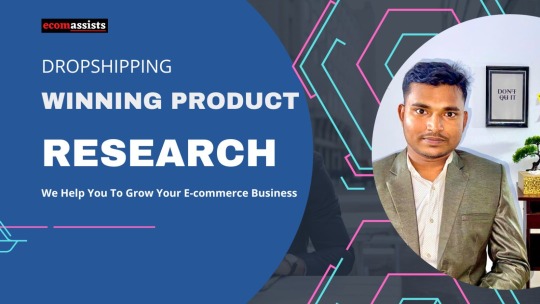
If you are you a drop shipper or e-commerce business owner struggling with your Shopify Dropshipping Store Or do you want to scale your business?
Then there is no alternative to the winning product for you. One winning product can indeed impact your business.
As a team, our goal is to help you to grow your business. You can get assistance from members of our highly skilled team in finding profitable products for your Shopify dropshipping store.
We are professionals in Shopify product research. By conducting extensive Shopify product research, we will locate for you the niche or general best-winning product.
We will provide you:
Trending & Evergreen Winning Products
Product Description (Different than your competitors)
Quality Product Image
Top Rated Vendors Link
Reviews
Your Profits & Costs Calculation
Adding Products Professionally to your Shopify Store
So what are you waiting for? Let's take action to grow together. Text me or let's have a meeting to get started.
Contact us: Fiverr, Instagram
Email: [email protected]
#productresearch#productdevelopment#consumerresearch#marketresearch#productdesign#productstrategy#producttesting#productlaunch#productmanagement#productmarketing
2 notes
·
View notes
Text
2022's Top 17 Shopify Fulfillment Apps
According to AVADA Commerce Ranking, which is based on AVADA Commerce scores, rating reviews, search results, and social analytics, there are 17+ Best Shopify Fulfillment Apps out of hundreds of Fulfillment reviews in the market (Shopify Apps Store, Shopify Apps). The reviews shown below were chosen by hand by AVADA Commerce professionals. If your app for fulfillment was not included, please get in touch with us. On November 23, 2022, the top Fulfillment app collection will be revealed, with prices starting at $0. You can find alternatives to Fulfillment that are both free and paid. The Best 50+ Free Shopify Apps for All Stores.
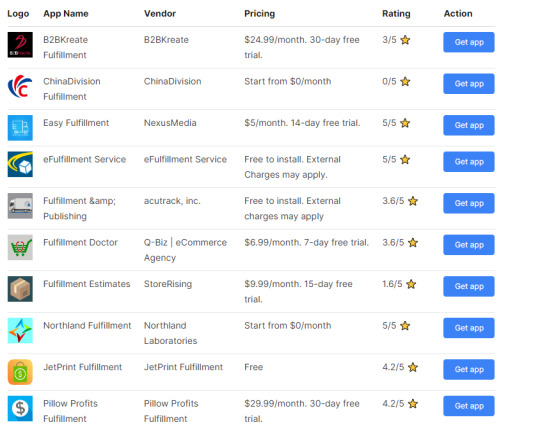
1 B2BKreate Fulfillment by B2BKreate
Do you have a lot of business ideas that you'd like to pursue but are hesitant to invest in? B2BKreate Fulfillment by B2BKreate will handle the rest if you bring your concept to them. You may add exclusive products to your business with B2BKreate Fulfillment without having to invest in inventory. You won't need to learn anything because the product creation and customization are so simple to use, giving you more time to concentrate on boosting your earnings. Even if the production process is carried out at the speed of light, quality is still guaranteed, and B2BKreate Fulfillment will replace any defective goods at no cost to you. There is no requirement for a minimum order quantity, so you can make the profit you desire without spending any of your own money. A full 30-day free trial of B2BKreate Fulfillment is offered.
Particulars Highlights
Increase exclusive products without buying inventory
Simple to create products Lightning-fast manufacture No minimum order quantity required
Free product exchanges are available.
Cost: $24.99 per month. 30 days of no cost.
Rated 3 out of 5
2 ChinaDivision Fulfillment by ChinaDivision
A China-based firm called ChinaDivision Fulfillment by ChinaDivision will assist you in finding cheaper prices, as well as your clients. Due to ChinaDivision Fulfillment's established relationships with shipping companies, it will be easier, quicker, and more valuable for you to complete orders sent through your website. The fact that ChinaDivision Fulfillment is situated in China means that, as long as you can meet its requirements, it will assist you in storing the products, shipping them abroad as you requested, and providing free warehouse services. For crowdfunding entrepreneurs who want to transport their orders to their backers worldwide, ChinaDivision Fulfillment is a good option. Get ChinaDivision Fulfillment, a free app that caters to a wide range of people.
Particulars Highlights
Obtain appropriate customer discounts
Make e-commerce order fulfillment simple, quick, and affordable.
aid in shipping and storing goods overseas
Suitable for creators of crowdsourcing
offer no-cost warehousing services
Price: Starting at $0 per month
Free 3-month trial of Shopify for $1 from AVADA Commerce
3 Easy Fulfillment by NexusMedia
The NexusMedia team's Easy Fulfillment solution, which is available to all Shopify e-commerce administrators, is crucial for managing carriers, order fulfillment, and the creation of tracking links. By selecting your own package carrier, choosing the format of the tracking link, and, of course, completing your orders in bulk, Easy Fulfillment gives you the ability to avoid wasting valuable time manually adding tracking links for each order. We are here to guarantee that all of your tracking links will be created automatically. Additionally, you can now import tracking codes or tracking numbers for orders in CSV to fulfill all of your orders in bulk. Enjoy the app right away with only one click, and feel free to ask any questions or give feedback!
Particulars Highlights
Support stores that use regional carriers
By creating tracking links automatically, you can save time.
Fulfill orders in bulk using a CSV file and tracking numbers.
Create tracking links for your personal carriers automatically.
Give buyers the option to receive shipping confirmation
Cost: $5 per month. free 14-day trial.
Rated 5 out of 5
More details: best fulfillment apps for shopify
3 notes
·
View notes
Text
Choosing the Right Ecommerce Platform for Your Business

An online presence is crucial for businesses of all sizes. Whether you're a small startup or a large enterprise, selling products or services online opens up opportunities to reach a wider audience and grow revenue. However, with so many ecommerce platforms available, choosing the right one for your business can be a daunting task. Here are some key factors to consider when selecting an ecommerce platform.
What Are Your Options?
Based on the factors mentioned below, a few popular ecommerce platforms stand out, each with its own strengths and suitability for different types of businesses:
- Shopify: Known for its user-friendly interface and extensive app store, Shopify is a great choice for small to medium-sized businesses who want an all-in-one solution.
- WooCommerce: Built on WordPress, WooCommerce offers flexibility and customisation options for businesses already using the WordPress platform.
- Magento: Ideal for large enterprises with complex ecommerce needs, Magento provides scalability and advanced features but requires technical expertise to manage.
Factors to Consider
Business Needs and Goals
Before getting stuck into the selection process, it's important to understand your business needs and goals. Are you selling physical products, digital downloads or services? Do you require specific features like inventory management, multi-channel selling or subscription options? Understanding what your requirements are will help narrow down your options.
Scalability and Flexibility
As your business grows, so will your ecommerce needs. It's important to choose a platform that can grow with your business and accommodate future growth. Look for platforms that give you flexibility in terms of adding new features, integrating with third-party applications and handling increased traffic and transactions. If the thought of scaling your own site is daunting, then turning to a specialist agency like magecloud.agency is the way to go.
User Experience (UX)
A flawless user experience is vital for driving conversions and retaining customers. Choose a platform that offers customisable themes and templates, mobile responsiveness, easy navigation and a streamlined checkout process. Your ecommerce platform should make it easy for customers to find products, make purchases and return if needed.
Payment Options and Security
Providing multiple payment options and ensuring secure transactions are essential for building trust with your customers. Look for ecommerce platforms that support a variety of payment gateways, including credit cards, digital wallets and alternative payment methods. Additionally, prioritise platforms that are compliant with industry-standard security protocols, such as PCI DSS, to protect sensitive customer data.
SEO and Marketing Features
If you want to encourage traffic to your online store and improve visibility, choose an ecommerce platform that offers robust SEO features. This includes customisable URLs, meta tags, sitemaps and integration with marketing tools like email marketing and social media. The ability to optimise product pages for search engines will help improve your store's ranking and attract more organic traffic.
Cost and Pricing Structure
Consider the overall cost of the platform, which includes subscription fees, transaction fees and any additional charges for premium features or add-ons. Compare pricing structures of different platforms to ensure that you're getting the best value for your budget. Keep in mind that while some platforms may offer lower upfront costs, they may charge higher fees as your business grows.
Customer Support and Resources
Reliable customer support is crucial, especially if you're new to ecommerce or encounter technical issues along the way. Go for platforms that offer responsive customer support through multiple channels like live chat, email and phone. On top of this, think about the availability of resources like documentation, tutorials and community forums to help you get the most out of the platform.
Integration and Compatibility
Your ecommerce platform should seamlessly fit in with other tools and systems you use to run your business, such as accounting software, CRM systems and shipping providers. Pick a platform that offers a wide range of integrations or has an open API that allows for custom integrations.
Ultimately, the right ecommerce platform for you will depend on your unique requirements, budget and long-term goals. By carefully evaluating these factors and weighing your options, you can choose a platform that empowers your online business to thrive.
Read the full article
0 notes
Text
What is a Premade Shopify Store?
A premade Shopify store is a fully designed online shop that's ready for immediate use. It comes complete with products, a chosen theme, essential apps, and sometimes even pre-established traffic and revenue. This option is perfect for entrepreneurs who wish to avoid the initial setup phase and dive straight into managing and growing their business.
Advantages of Buying a Premade Store
One of the main benefits of purchasing a premade store is the significant reduction in startup time. Additionally, these stores often come SEO-optimized to a degree, helping new owners start with a better ranking in search engine results. The assurance of a professionally designed aesthetic and user experience is another plus.
Different Types of Premade Shopify Stores
Premade Shopify stores can vary greatly, from niche products like eco-friendly goods to broad-range stores aimed at general merchandise. Understanding the type of store that aligns with your business goals is crucial in making a beneficial purchase.
How Much Does a Premade Shopify Store Cost?
The cost of premade Shopify stores can range widely, typically between $200 and several thousand dollars, depending on the store's existing traffic, revenue, and setup complexity.
Customizing Your Premade Shopify Store
While premade stores offer a quick start, customization is key to standing out. This section should discuss how to personalize your new store to better reflect your brand and appeal to your target audience.
SEO Strategies for New Shopify Stores
SEO is vital for any online business. This section will cover basic SEO strategies that are essential for newly acquired Shopify stores to improve their visibility online.
What Does "Turnkey" Really Mean?
The term "turnkey" refers to something that is ready for immediate use, generally used in the context of businesses and properties. A premade Shopify store is often a turnkey solution, meaning it requires little to no additional setup before operation.
Time Savings with Premade Stores
Discuss how much time entrepreneurs can save by opting for a premade store, and what they can do with this saved time to boost their business.
Legal Aspects of Buying a Store
It's important to understand the legal considerations involved in purchasing an existing online business, including transfer of ownership and intellectual property rights.
How to Verify a Store Seller
This section provides advice on how to ensure that the seller of the store is reputable and that the store's metrics are legitimate.
Transitioning Ownership Smoothly
Tips and best practices for taking over an existing Shopify store without disrupting its operation or sales.
Steps After Buying a Shopify Store
Outline the immediate steps a new owner should take post-purchase, such as auditing the site, understanding the customer base, and setting new business objectives.
Potential Risks and Pitfalls
Discuss the risks associated with buying a premade Shopify store, such as outdated inventory, SEO penalties, or hidden costs.
Alternatives to Buying a Premade Store
For those who might reconsider the premade route, this section explores alternatives such as building a Shopify store from scratch or opting for other e-commerce platforms.
Why Consider a Premade Shopify Store
In conclusion, reiterate the key benefits and considerations of buying a premade Shopify store, helping potential buyers make an informed decision.
0 notes
Video
youtube
Step by step guide on How to make money with Dropshipping businessCheckout our website; https://www.ecomhardy.com In this video, I will explain to you a basics of dropshipping and some important facts on how to make money with dropshipping business. Starting a dropshipping business can be a great way to make money online. It involves selling products on your own website or online store, but instead of keeping inventory and fulfilling orders yourself, you partner with a supplier who handles the inventory and shipping for you. This means you can focus on marketing and promoting your products, without worrying about the logistical aspects of running a traditional e-commerce business. Here are some steps to get started with a dropshipping business: Choose a niche and research products The first step in starting a dropshipping business is to choose a niche or specific product category to focus on. This could be anything from fashion and beauty to home goods or electronics. Once you 19ve chosen a niche, start researching products within that category to see what is popular and in demand. Look for products that have a good profit margin and are easy to source from a supplier. Find a reliable supplier The next step is to find a reliable supplier who can provide the products you want to sell. There are several ways to do this, including: Search online directories of wholesale suppliers Join trade shows and meet with potential suppliers in person Use a dropshipping platform like Oberlo or Spocket to connect with suppliers It 19s important to carefully research any supplier you work with, as their reliability and quality of products will directly impact your business. Set up your online store Once you 19ve chosen your niche and found a reliable supplier, it 19s time to set up your online store. There are several options for building an online store, including using a platform like Shopify or building your own website. Consider factors like cost, ease of use, and the types of features you need (such as payment gateways and shipping integrations). Promote your products and make sales Once your online store is set up, it 19s time to start promoting your products and making sales. This can be done through a variety of channels, including social media, email marketing, and advertising. It 19s important to continuously test and optimize your marketing efforts to ensure you are reaching the right audience and converting visitors into customers. Manage orders and fulfillments Once you start making sales, it 19s important to manage orders and fulfillments efficiently. This means communicating with your supplier to make sure orders are shipped out in a timely manner and tracking the status of orders. It 19s also important to have good customer service and communication with your customers to ensure a smooth and positive experience. Overall, starting a dropshipping business can be a rewarding and lucrative way to make money online. By choosing a niche, finding a reliable supplier, setting up an online store, and effectively promoting your products, you can build a successful dropshipping business. LIKE, SHARE and SUBSCRIBE
#wordpress#woocommerce#elementor#dropshipping#ecommerce#ecomhardy#dropshipping 2022#free dropshipping course#best dropshipping alternatives#dropshipping for beginners#beginner friendly dropshipping#dropshipping step by step#how to start dropshipping store#best dropshipping methods#shopify dropshipping#shopify tutorial for beginners#how to start dropshipping#dropshipping guide#dropshipping tutorial#how to dropship#how to shopify dropship#shopify#drop
1 note
·
View note
Text
Crafting Engaging Contact Forms to Enhance Your Shopify Site
Contact Form to Any API
In the dynamic realm of e-commerce, effective customer engagement is pivotal for business success. A fundamental tool in this engagement strategy is a well-designed contact form embedded on your shopify form builder website. Contact forms serve as a direct conduit for communication between you and your customers, facilitating inquiries, feedback, and requests. When strategically crafted, contact forms can significantly enhance user experience, foster meaningful interactions, and ultimately bolster business growth. In this guide, we will delve into the art of creating captivating contact forms tailored for your Shopify site to maximize their impact.

The Importance of Engaging Contact Forms
Contact forms are more than functional components of a website—they are pivotal touchpoints that can leave a lasting impression on visitors. Here's why engaging contact forms matter:
- Encourage Interaction: A visually appealing and user-friendly contact form invites users to engage with your brand, promoting active participation.
- Capture Valuable Information: Well-structured forms can gather essential customer data, offering insights that inform marketing strategies and enhance customer service.
- Build Trust: A professional and responsive contact form instills confidence in customers, conveying accessibility and responsiveness to their needs.
- Drive Conversions: Clear and concise contact forms can generate more inquiries, thereby increasing the likelihood of converting leads into customers.
Tips for Creating Engaging Contact Forms
Now, let's explore actionable tips for designing and optimizing contact forms that captivate your audience:
1. Simplicity is Key: Avoid overwhelming users with excessive fields. Keep the form concise, requesting only essential information to streamline the submission process.
2. Clear Labels and Instructions: Ensure each field is distinctly labeled and provide intuitive instructions to guide users through the form completion process.
3. Optimize for Mobile: Given the prevalence of mobile browsing, ensure your contact form is responsive and user-friendly across all devices and screen sizes.
4. Visual Cohesion: Incorporate your brand's colors, fonts, and imagery to make the contact form visually cohesive with the overall design of your Shopify site.
5. Compelling Call-to-Action (CTA): Use persuasive language in your CTA button to prompt users to submit the form. Examples include "Send Message" or "Get in Touch".
6. Offer Contact Options: Provide alternative contact methods (e.g., phone number, email) alongside the form to accommodate various user preferences.
7. Automated Responses: Set up automatic confirmation emails to reassure users that their message has been successfully submitted and received.
8. Spam Protection: Implement CAPTCHA or other anti-spam measures to prevent unwanted submissions and maintain the integrity of your contact form.
Shopify Contact Form Plugins
To streamline the creation of engaging contact forms on your shopify with crm site, consider leveraging specialized contact form plugins tailored for Shopify. Here are some popular options:
- Form Builder Apps: Apps like **[Plugin Name]** empower you to create custom contact forms with intuitive drag-and-drop interfaces, allowing seamless integration into your Shopify store.
- Contact Form Integrations: Explore integrations such as **[Integration Name]**, which offers advanced features like conditional logic and multi-step forms to enhance user interaction.
- CRM Connections: Utilize plugins that seamlessly integrate with customer relationship management (CRM) platforms like **[CRM Name]**, enabling efficient data management and lead tracking.
Best Practices for Optimization
In addition to the aforementioned tips, here are additional best practices to optimize the effectiveness of your Shopify contact forms:
- A/B Testing: Experiment with different form layouts, fields, and CTAs to identify the most effective combination that resonates with your audience.
- Regular Updates: Continuously monitor and refine your contact forms based on user feedback and analytics to ensure optimal performance and user satisfaction.
- Accessibility: Ensure your contact form is accessible to users with disabilities by adhering to web accessibility standards, such as providing alternative text for form elements.
- Compliance: Adhere to data protection regulations such as GDPR or CCPA by implementing privacy policies and secure data handling practices within your contact forms.
Frequently Asked Questions (FAQ)
1. Why is it important to have a contact form on my Shopify site?
A contact form provides a convenient way for visitors to reach out to you with inquiries, feedback, or requests. It enhances user experience and builds trust by demonstrating accessibility and responsiveness.
2. How many fields should I include in my contact form?
Keep your contact form concise by including only essential fields such as name, email, subject, and message. Avoid overwhelming users with unnecessary information.
3. How can I make my contact form visually appealing?
Incorporate your brand's colors, fonts, and imagery to create a visually cohesive design that aligns with the overall aesthetics of your Shopify site.
4. Which Shopify contact form plugin is best for beginners?
For beginners, user-friendly form builder apps like **[Plugin Name]** or **[Integration Name]** are recommended for creating and customizing contact forms without extensive technical knowledge.
5. How can I protect my contact form from spam submissions?
Implement CAPTCHA, honeypot fields, or other anti-spam measures provided by your chosen contact form plugin to minimize spam submissions and maintain the integrity of your form.
0 notes
Text
Maximizing Profits: A Guide to Selecting the Best Shopify Payment Gateway
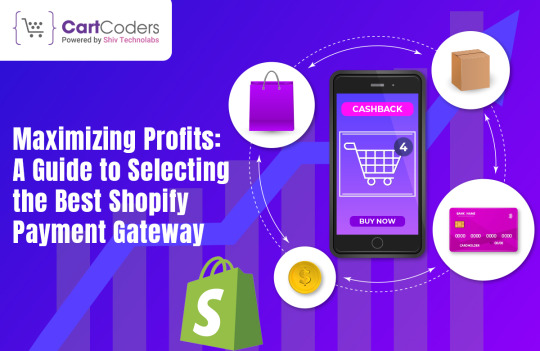
Choosing the appropriate payment gateway for your Shopify store is not merely a technical necessity; it is a strategic decision that has a direct influence on your profitability. The payment gateway not only processes transactions, but also plays an important role in building customer trust, reducing transaction fees, and improving the shopping experience.
Nevertheless, when faced with numerous alternatives, choosing the most suitable Shopify payment gateway for your store might be an extremely challenging task. This guide is an effort to make your choice-making process easy.
Factors to consider when selecting a payment gateway
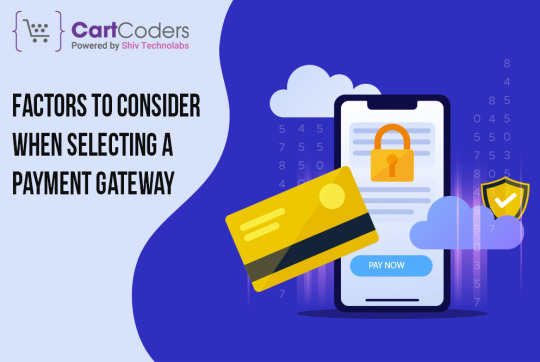
Payment gateways are pivotal for Shopify store owners because they determine transaction fees, payment security, customer experience and the store’s bottom line. The following are some points to be considered:
Transaction fees
The transaction fees that each payment gateway charges can make a noticeable difference in your profitability, especially for a small business that is already running on slim margins.
It is imperative to ensure a clear understanding of the fees involved, such as the monthly fees, setup fees, or charges for chargebacks and refunds. By choosing a gateway with a very transparent and reasonable fee, you could save a lot of money in the long run.
Payment methods supported
Your chosen payment gateway should support a wide range of payment methods preferred by your target audience, including credit cards, debit cards, PayPal, digital wallets like Apple Pay and Google Pay, and even local payment methods if you're targeting specific regions. Offering multiple payment options can enhance the customer experience and increase the likelihood of successful transactions.
Security and Compliance
The security of your payment gateway is paramount. Look for gateways that offer robust security features such as end-to-end encryption and are compliant with PCI DSS (Payment Card Industry Data Security Standard). This not only protects sensitive customer information but also builds trust with your customers, assuring them that their data is safe.
Integration and compatibility
Seamless integration with your Shopify store ensures that the checkout process is smooth and uninterrupted. The payment gateway should easily integrate with your site, maintaining the look and feel of your brand throughout the checkout process. Additionally, compatibility with other tools and apps you use is essential for a cohesive operational workflow.
Customer experience
The checkout experience directly influences conversion rates and customer satisfaction. A payment gateway that offers a quick, easy, and intuitive payment process can reduce cart abandonment rates. Features, like saved payment information for return customers, a mobile-friendly interface, and minimal required fields, can contribute to a positive checkout experience.
The role of Shopify integration services
The global payment gateway market was valued at $26.79 billion in 2022 and is projected to grow by a CAGR of 22.2% from 2023 to 2030. Navigating through the technicalities of payment gateway integration can be challenging, especially for store owners focusing on scaling their businesses. Here's where professional Shopify integration services come into play.
By leveraging these services, you can:
Ensure smooth integration: Experts handle the technical aspects of integrating the payment gateway with your Shopify store, ensuring a seamless process without disrupting the user experience.
Customize checkout experience: Shopify's platform, especially with Shopify Plus checkout customizations, offers opportunities to tailor the checkout process. Customizations can align the payment process with your brand, improving customer satisfaction and conversion rates.
Access to expertise: Integration specialists are well-versed in the nuances of various payment gateways and can provide insights into the best practices, security measures, and optimizations that can enhance transaction efficiency.
Selecting the best payment gateway: A step-by-step approach
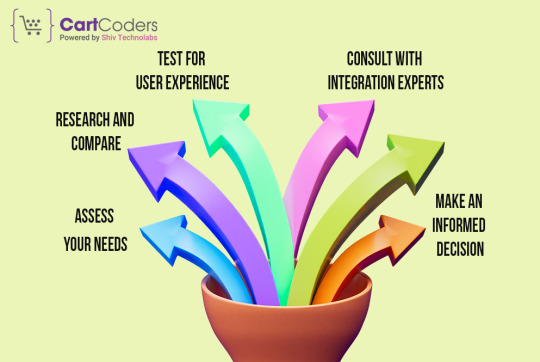
Assess your needs: Analyze your business model, target market, and average transaction size to determine your specific requirements from a payment gateway.
Research and compare: Conduct thorough research on available payment gateways that meet your criteria, comparing them based on the factors mentioned earlier.
Test for user experience: If possible, test the checkout process of each contender to gauge the user experience firsthand.
Consult with integration experts: Engage with a reputable Shopify integration company or experts to gain insights into the intricacies of each payment gateway and how well they integrate with Shopify.
Make an informed decision: Based on your research and consultations, select a payment gateway that best aligns with your business goals and customer preferences, and offers the most value in terms of costs, security, and user experience.
Conclusion
Selecting the right payment gateway for your Shopify store is a pivotal decision with far-reaching implications for your eCommerce success. Collaborating with CartCoders can significantly enhance the integration process, ensuring a seamless, secure, and profitable transaction experience for both you and your customers. With the right approach and expert assistance, you can transform your checkout process into a powerful tool for eCommerce success.
0 notes